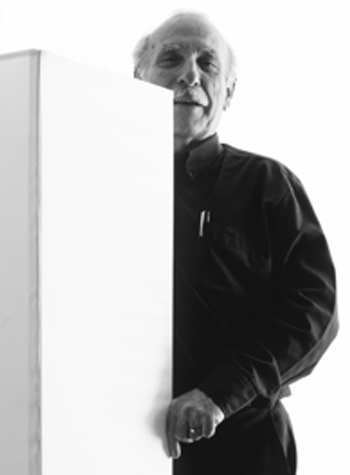Ferran Freixa Jové
Menarguens (Lleida), 1922 - 2008
Ferran Freixa Jové was born on 20 October 1922 in Menarguens (Lleida). In 1947 he began studying to become a quantity surveyor in Barcelona, however, he ended up graduating in technical architecture years later. Due to his talent, he began teaching technical drawing at various prestigious institutions from 1950 on.
When he completed his studies, Ferran Freixa Jové began to collaborate on various projects with architects such as Martinell, Bonet Garí, Bonet Armengol, Sostres, and others. In 1959 he created Best-Form with the aim of editing in Spain the well-known iron and leather...
Ferran Freixa Jové was born on 20 October 1922 in Menarguens (Lleida). In 1947 he began studying to become a quantity surveyor in Barcelona, however, he ended up graduating in technical architecture years later. Due to his talent, he began teaching technical drawing at various prestigious institutions from 1950 on.
When he completed his studies, Ferran Freixa Jové began to collaborate on various projects with architects such as Martinell, Bonet Garí, Bonet Armengol, Sostres, and others. In 1959 he created Best-Form with the aim of editing in Spain the well-known iron and leather BKF armchair by Bonet, Kurchan and Ferrari-Hardoy (1939), as well as other designs of his own. After years of editing, in 1961 he won the first ever ADI-FAD Golden Delta for the N-4 lamp, part of the Nagoya series, and in 1962 he won a Silver Delta for a wall lamp design. An award-winning editor with a passion for design, in December 1967 he became involved with ADI-FAD as a design partner. A year later, Ferran Freixa Jové became a member of the board of the association, participating in the preparation and development of the International Council of the Societies of Industrial Design (ICSID) congress in Ibiza, where he served as treasurer. He was a member of the ADI-FAD board until 1975.
Innovating the business model of his company Best-Form, in 1969 he developed a series of modular furniture called Format 22. From then on, he experimented with new designs and expanded his product portfolio. This furniture and other pieces designed by his company became part of the firm Galo-Ben in Barcelona.
In the 1970s, Ferran Freixa Jové expanded his footprint in Spanish design through a number of projects, assemblies and companies. In 1972, he was commissioned to design and build an inflatable pavilion to house the work of the various groups belonging to the FAD Association. The following year, together with the designers Casablancas, Blanc, Carreras, Prats and Bertran, he founded the Centre de Disseny de Barcelona (BCD), a group focused on the promotion of design at the municipal level. This gave rise to a number of business opportunities, such as ACORD S.A., which was established in 1974, producing furniture and design on a larger scale. The Minor 10 Series, which won the ADI-FAD Golden Delta in 1974, was among the most outstanding products in the catalogue.
From the 1980s onwards, together with Antoni de Moragas Gallissà, he helped recover several monuments that were dismantled at the end of the Civil War, such as the ones dedicated to Rafael Casanovas, Francesc Layret and the monument to Doctor Robert. In 1997, he decided to set up his own design studio, Produccions Estudi Freixa, where he focused on lighting. This gave rise to the Prisma collection of lamps for which he won the Silver Delta in 1997. Ferran Freixa Jové died in Barcelona on 19 September 2008.
Clever and technically skilled, Ferran Freixa Jové seamlessly combined entrepreneurial sense with design flare.

